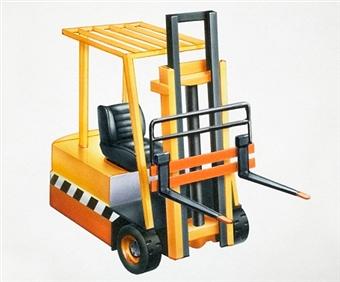Forklifts... What To Do And What Not To Do?

Forklifts are used to maneuver large products or equipment, and to move pallets of materials, goods, and supplies around warehouses, factories, and other industrial areas. Forklifts are much heavier than the average car and are very powerful. The U.S. Occupational Safety and Health Administration (OSHA), enforces strict regulations for proper training to use forklifts, because their usage relies not only on understanding the scope of the forklift, but also the common sense needed in being aware of the people and the surroundings.
This is why there are lots of forklift training courses available to people how to drive the forklift properly and safety is a big part of the course. For more information on forklift training courses, go to www.aftt.co.uk
Safety is always the utmost concern when handling any heavy machinery. OSHA has set forth training regulations to make sure that the operator – and all other personnel in the surrounding area – are safe. Employees that have learned the correct usage and care for the equipment can be certified.
Training is made up of a classroom time studying general information and safety regulations, and a practical time of learning how to actually operate the forklift. Training can be done either through the employer, or by a facility that provides specialized training. Forklift operators must get a forklift truck license before legally driving the forklift, and recertification must be completed every 3 years.
There are many safety regulations that a driver must learn before operating the forklift. Primarily, in order to avoid extremely dangerous situations, a driver must always be aware of other personnel that are present in the work area, as well as other hazards that could hinder movement. Additionally, one must never make the mistake of riding on the forks or taking a short-cut under them either. The cab is designed with the driver in mind and should be the only person on the forklift in any manner.
The actual forklift must also be able to pass a rigorous safety inspection where parts like the lights and horn are tested along with a slew of other measures. Forklifts should only be used in industrial-approved settings, and not on unstable ground, or on ice, snow, or in mud. When parked, the forks must be in their lowest position, and wheels should have a block behind them if on an incline. Finally, a forklift should never pick up a load that is incorrectly balanced, as it might drop the load on personnel, as well as damage the load.
Forklifts are not standard automobiles and should never be treated like one. An operator should be fully knowledgeable in the stability and capacity of the forklift, the controls and instrumentation, the visibility, engine operation, maintenance, fueling, battery, and all other general operating instructions. A capable operator is taught how to navigate narrow aisles, how to carefully maneuver up and down ramps and over railroad tracks, and finally the potential hazards of improper ventilation.
If the driver is using the machinery in an unsafe manner, or if the driver is involved in an accident, it is advised that recertification take place. Similarly, if an operator is promoted to equipment that is larger or otherwise different than the initial training, a new certification course is advised.
When operators carry the proper certification cards on them, the can be identified easily by unfamiliar supervisors, such as new management or a supervisor from another shift. Likewise, if officials from OSHA, insurance companies, or other regulatory agencies are inspecting the facility, the driver’s credentials should be in order.

